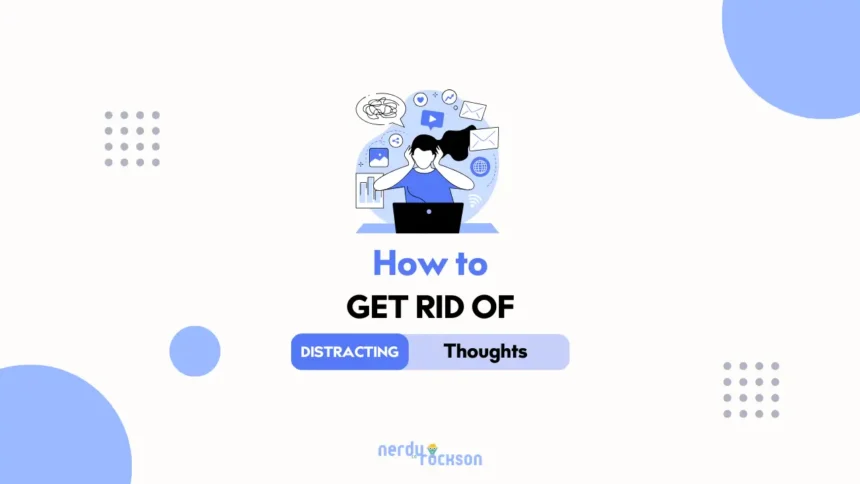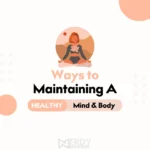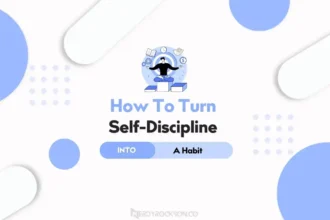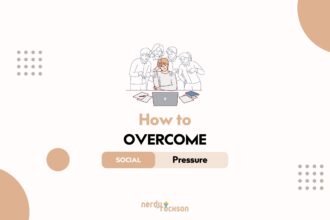Have you ever found yourself amidst an important task and suddenly your mind begins to wander off? Yes, just like that, you have fallen prey to distracting thoughts. A large bounty of evidence backed by science is available, confirming that we all experience this trouble of how to get rid of distracting thoughts, and it doesn’t discriminate, affecting professionals, students, and individuals alike.
Killingworth and Gilbert (2010) revealed that people’s minds wander to an astonishing extent 47% of the time, highlighting how prevalent this issue has become. It’s not just the magnitude of the problem that’s alarming, but how it impacts our productivity, creativity, and overall well-being.
In the quest for how to get rid of distracting thoughts, you must understand that these disturbances aren’t necessarily signs of disorder. As Franklin, Mrazek, Anderson, Smallwood, Kingstone, and Schooler (2013) note, they have their origins in the functioning of our mind and therefore cannot be completely eradicated. But worry not, for this article is not to root out every single distraction your brain may serve up. Rather, it seeks to offer strategies that will empower you to manage these distractions effectively.
You can’t do big things if you’re distracted by small things.
In this article, we will lead you through various techniques that present successful rebuttals on how to get rid of distracting thoughts fast, with the aspiration that you will convert these ideas into practical habits, thereby substantially improving your focus and productivity.
Why Do I Keep Getting Distracted by My Thoughts?
Experiencing distracting thoughts is a common plight — you’re not alone in this. The human brain can generate 60,000 to 80,000 thoughts per day, according to the National Science Foundation. This translates to approximately 2500 to 3300 thoughts per hour. An ever-active brain, combined with our increasingly hectic and stressful lifestyles, sets the stage for distracting thoughts.
These thoughts might flood your mind for a variety of reasons. For some, it might be due to multitasking, while others might be grappling with overthinking. Anxiety, stress, and low mood can also give rise to distracting thoughts. Do you ever find yourself replaying conversations, or worrying about future events? These types of thoughts are prime examples of distractions that do not serve you.
Moreover, it’s crucial to understand that the nature and content of distracting thoughts can significantly vary from one person to another. These thoughts can encompass worries about future events, incessant rumination over past incidents, or simply daydreams that wander far from the task at hand. When you find your focus wavering, it’s typically these distractions that are to blame.
Remember, having distracting thoughts isn’t necessarily a sign of a major problem — it’s simply a facet of human nature. But when these thoughts start impeding your productivity, affecting your well-being, or disrupting your daily life, it’s time to do something about them.
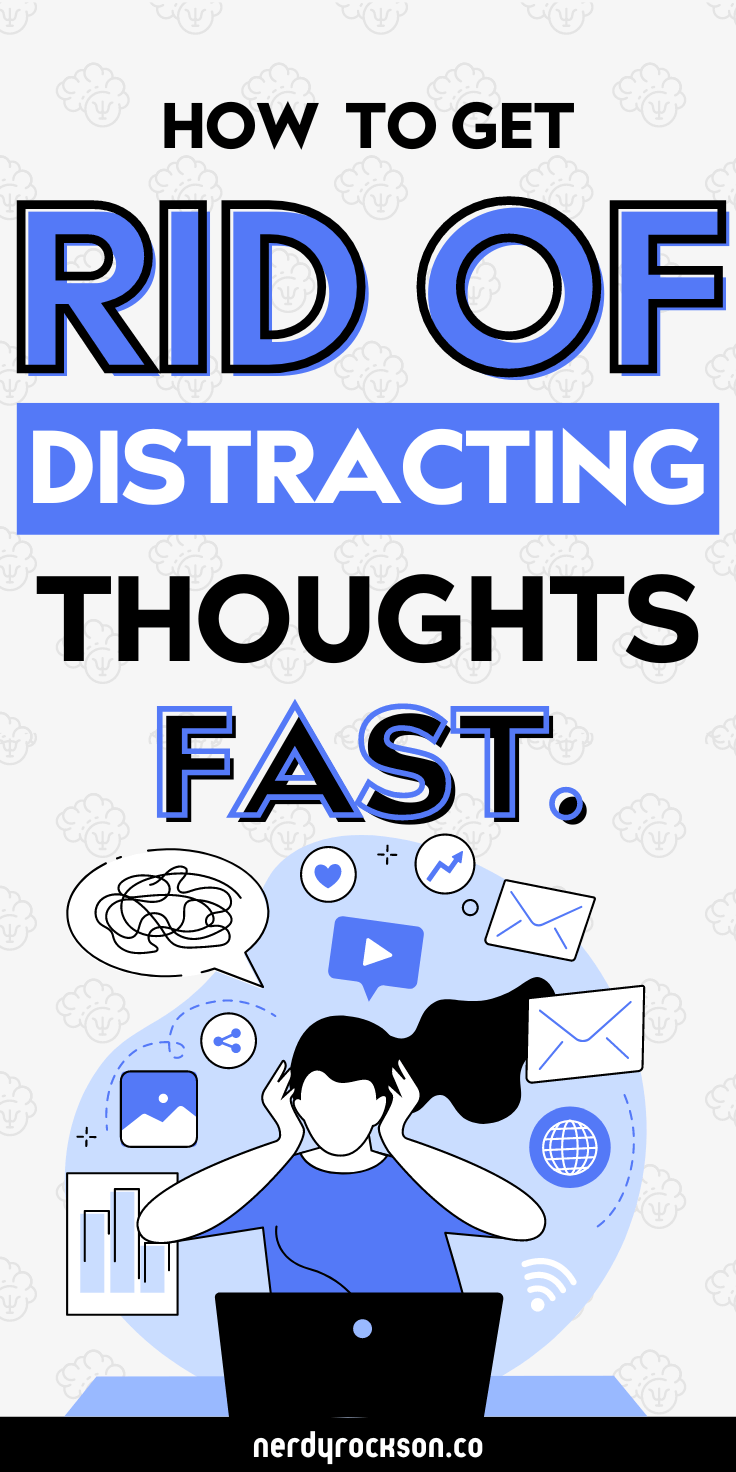
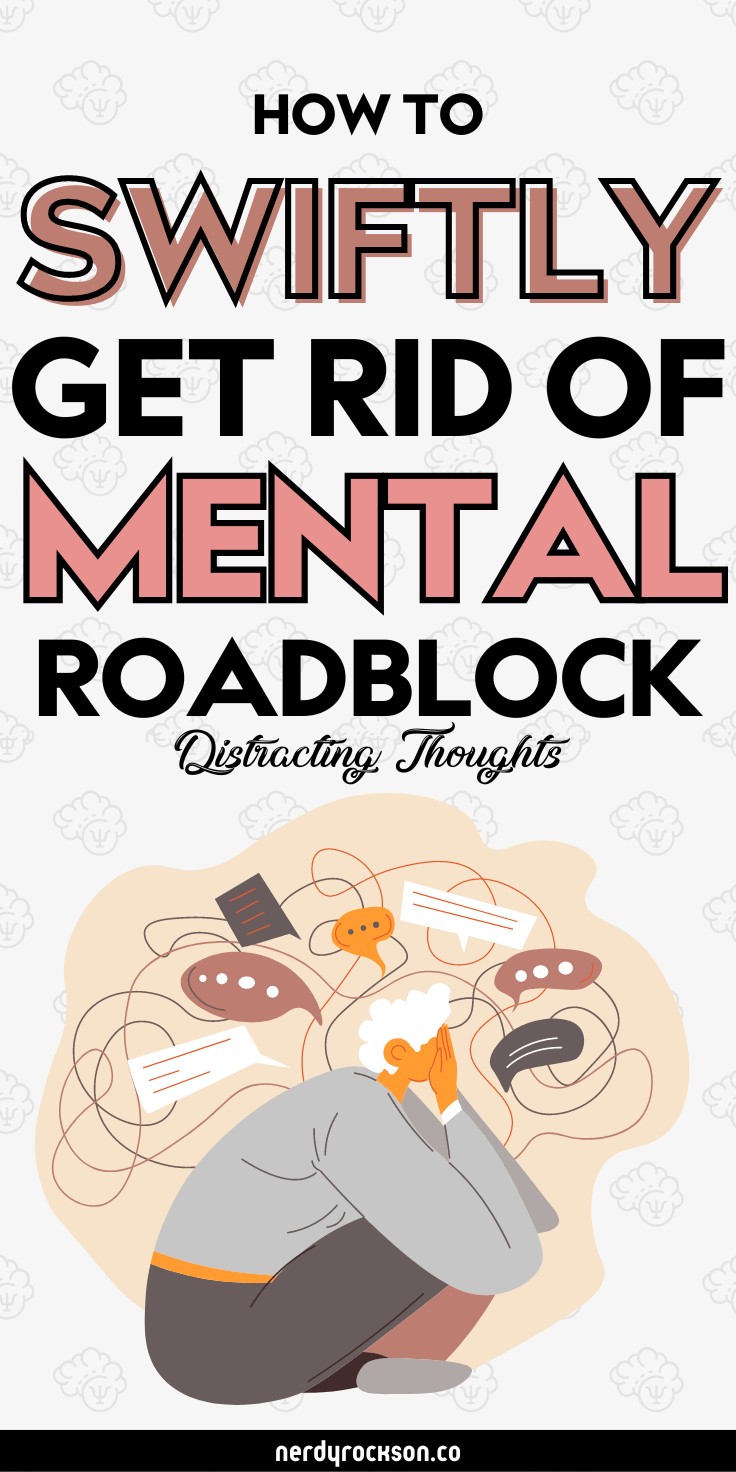
How to Get Rid of Distracting Thoughts
1. Mindfulness Meditation
Do you ever struggle with maintaining focus because of distracting thoughts circulating in your mind? You’re not alone. Finding an effective way to deal with these thoughts can be a challenge, yet mindfulness meditation offers a potent solution. This practice anchors you in the present moment, allowing you to better understand and manage your thoughts.
Mindfulness meditation is essentially the act of paying attention, on purpose, in a particular way, without judgment. It’s about witnessing your thoughts and feelings as an impartial observer, not wrestling, or getting entangled with them.
During the meditation, you pay attention to your breathing, the sensation of air entering and leaving your body, or the rise and fall of your abdomen or chest. This concentration helps bring your awareness away from the web of distracting thoughts, offering you a new perspective on the situation at hand. It illuminates the constant chatter of the mind, providing space to recognize and let go of unhelpful thoughts.
Research findings have shown that regular mindfulness meditation can reduce the grey matter density in areas of the brain related directly to anxiety and stress. So, it’s less about getting rid of thoughts and more about changing your relationship with them.
You might be wondering, “But how exactly do I start mindfulness meditation?” It’s simpler than you might think. Start with short meditation sessions, around 5 minutes per day. As you gain more comfortability and proficiency, you can gradually extend to 10 minutes, 15 minutes, and eventually 20 minutes per day.
In conclusion, embracing mindfulness meditation marks the first essential step towards winning the battle against distracting thoughts. It’s worth noting, though, that results aren’t immediate. Patience and consistency are key. Remember, this is not about achieving a blank mind, but about observing your thoughts with curiosity rather than judgement.
2. Park Your Thoughts
Imagine owning a parking lot for your thoughts, where you pull over those erratic mental wanderers and park them promptly for later review. This unassuming strategy, nicknamed “thought parking,” can be a powerful tool in controlling that daily barrage of distractions clashing in your mind.
Adopting this method requires active cognitive engagement. You need to pause, identify the distracting thought, and consciously decide to set it aside for a specific time. This lets you affirm that the thought matters, but its immediate resolution is not a priority. Therefore, ensures you return to productivity and refocus your concentration back on the task at hand. Now you may wonder, how effective could this technique be?
Research indicates that suppressing thoughts can lead to a counterproductive outcome, making them return more forcefully, dubbed the rebound effect. However, what makes thought parking different and practical is that it doesn’t aim to suppress thoughts but rather postpone them. A study published in the journal ‘Emotion’ found that postponing your worries can alleviate anxiety and improve problem-solving capabilities. Impressive, isn’t it?
Developing this skill, like any other, will require practice and consistency. Consider setting aside a small slot of “worry time” in your daily routine, where you unpack these parked thoughts, ponder over them, and address what needs addressing. This approach helps you manage your thoughts, mental energy, and time more efficiently.
Remember, your mind is your realm, your thoughts are the royal subjects, and you are the ruler. Maintain order in your kingdom and don’t let any unruly thought disrupt the peace. Anticipate a period of adjustment, and don’t be too harsh on yourself if you stumble initially. It’s all part of mastering the art of managing your thoughts.
3. Cognitive Behavioral Therapy (CBT)
Despite its clinical-sounding name, Cognitive Behavioral Therapy (CBT) isn’t something designed solely for individuals dealing with severe mental health issues. In reality, it is incredibly effective in dealing with a range of issues from moderate anxiety to, yes—you guessed it, distracting thoughts.
CBT is an approach that aims to solve issues by changing the individual’s pattern of thinking or behaviour. It does this by encouraging you to recognize and challenge disruptive thoughts, ultimately replacing them with healthier and more productive ones. Sounds amazing, doesn’t it? The key insight here is the undeniable link between our thought processes and the way we behave—essentially, how we think about something shapes our response to it.
Of course, mastering this technique isn’t something that happens overnight. It requires consistent practice and at times, guidance from professionals. But the effort is well worth the result: a calmer mind, less prone to the random distractions that our chaotic world often throws our way.
But don’t just take my word for it: according to a study conducted by the American Psychological Association, about 75% of people who undergo CBT show some form of improvement—a statistic you can’t ignore. Whether you decide to engage in self-learning or reach out to a licensed therapist for sessions, CBT remains a powerful tool against distracting thoughts.
4. Neurofeedback Training
You might be wondering, “What exactly is neurofeedback training?” Allow me to explain. Neurofeedback, also called neurotherapy or neuro biofeedback, is a type of biofeedback that trains your brain to function more efficiently. It’s an interactive and engaging therapy that involves responding to a display of your brain activity – much like playing a video game! With practice, your brain can learn to subdue distracting thoughts and prioritize focused thinking.
Your desire to explore this method points out your readiness to get rid of distracting thoughts. In one research study, 77.8% of participants reported a significant improvement in their attention spans after undergoing neurofeedback training. These findings can warm the heart of anyone struggling with distraction, and provide a beacon of hope. I tell you, your brain is more malleable than you might think!
The targeted approach of neurofeedback training can prove to be an asset to those who find themselves particularly troubled by persistent disruptive thoughts. This method not only identifies the brainwaves associated with distraction but also retrains them to promote concentration and focus. While the procedure may sound complex, it is typically non-invasive and doesn’t come with the same risks or side effects as some medications do.
Say you decide to embark on such a training course. What would it look like? In a neurofeedback session, sensors are placed on your scalp to measure electrical signals. Your brainwaves are then ‘displayed’ in real-time, and you’re trained to control them via feedback mechanisms like visual or auditory cues. Essentially, you’re ‘learning’ to change your thoughts, like a pianist practising a new piece!
Just imagine the transformation! The age-old advice of “master your mind, master your life” may find its perfect manifestation in this kind of brain training. Soon enough, you could be the one in total control of your thoughts. The possibility is exciting, isn’t it?
However, in your pursuit of focus, remember this – it may take a couple of sessions before you notice a difference. Yet, the goal is achievable. It requires consistent effort, a resolve that says, “I will reclaim the realm of my thoughts!”
5. Physical Exercise
Whoever said ‘a sound body is a sound mind’ was right on the money. Physical exercise plays a crucial role in how to get rid of distracting thoughts. You may be wondering – how does keeping the body active help to quiet your mind? You might be surprised, but yes! It’s scientifically proven.
A report in the Journal of Clinical Psychology found that people who exercised regularly reported a decrease in negative thought patterns. How does this happen, you may ask? When you exercise, your body releases endorphins- chemicals that not only make you feel happier but also help you concentrate better.
Whether it’s a brisk morning walk, a steady yoga routine, sweat-breaking gym sessions, or dancing to your favourite tunes, regular physical activities can boost your mood, improve your sleep, and reduce stress and anxiety, thereby helping you dispose of those pesky, distracting thoughts.
Not to mention, it can also increase your overall cognitive skills such as memory, reaction times, and creative thinking, thus making it easier for you to focus on the tasks at hand. Taking care of your body directly contributes to the health of your mind, rendering it another powerful tool in your fight against undesirable mental distractions.
6. Time Management Techniques
If we delve into the core of the matter, it’s essential to understand that mastering time management techniques can significantly aid in the battle against distracting thoughts. “But how?” you might ask. Well, here’s the science behind it. When you establish clear, manageable goals for your day, it focuses your thoughts and steers them away from unproductive distractions.
Begin by incorporating a daily planner or a digital calendar into your routine; they can serve to organize your thoughts around your daily tasks. This gives your brain a roadmap to follow, reducing the chances of it meandering into distracting thoughts. After all, aren’t well-planned journeys more enjoyable and less stressful?
Take short, timed breaks — known as the ‘Pomodoro Technique’. It consists of working for a set period, typically 25 minutes, then taking a short five-minute break. Repeat this four times, then take a longer break, allowing your brain to rest and recharge. It’s like a mental workout — you wouldn’t continuously stress a muscle without giving it rest, would you?
Furthermore, delegating tasks can also be beneficial. Do you find yourself juggling a plethora of responsibilities? Without a doubt, this can lead you down the path of overwhelming, distracting thoughts. Delegate tasks to others when possible, ensuring you’re not spreading your attention too thin.
In essence, effective time management techniques promote a healthier mental state, providing a solid structure for your thoughts to follow, rather than enabling them to run amok. They play a significant role in answering the lingering question of ‘how to get rid of distracting thoughts’ by laying a stable foundation for your focus and performance.
7. Use of Technology
Let’s capitalize on technology’s role in your proactive journey toward eliminating distracting thoughts. There’s a multitude of applications readily available that can help you declutter your mind, maintain focus, and decrease mental distractions. From meditation apps to productivity tools, technology has made mind management more attainable.
Apps like Headspace, Calm, and Insight Timer provide guided meditations and mindfulness training, giving you the tools you need to guide your thoughts away from distractions and toward a place of calm and focus. Using them even for just a few minutes every day can help you create a habit of mindfulness, cooling the jets of your galloping thoughts.
Moreover, productivity apps such as Forest, Focus Booster, and RescueTime can all help you manage your time better, enabling you to prioritize tasks and reduce unneeded distractions. These apps use techniques like the Pomodoro method, breaking your work into manageable chunks with breaks in between, thereby improving productivity and mental clarity.
Lastly, in this digital age, losing ourselves in a ceaseless wave of social media notifications and emails is a common scenario. To battle this, consider using apps that limit your screen time or block distracting websites during specific periods. Remember this; technology is not inherently the enemy—it’s dependent upon how you harness it.
Embrace technology’s potential to help you manage and get rid of distracting thoughts fast. At the end of the day, achieving mental clarity and focus is a journey that necessitates optimal use of all the tools at your disposal.
Final Thoughts
Armed with these strategies on how to get rid of distracting thoughts, you now possess the capacity to take active charge of your mental domain. Remember, the key to success lies not just in understanding these strategies, but in their consistent and judicious application. You are the architect of your thought process, and it is indeed within your power to structure it in a manner that best serves your purpose.
Mastering the art of thought control is a journey, not a destination. You might stumble and falter but don’t condemn yourself for it. Every expert was once a beginner too, and every step, no matter how small, is progress. With time, you will notice a significant improvement in your ability to handle distracting thoughts, thereby skyrocketing your productivity and shattering the barriers of your potential.
Remember, every mind has its distractions, so don’t let yours define you. Instead, seize control and bring your thoughts back into alignment. Use these techniques as your mental compass, guiding you towards heightened focus and effective thought management. Go forth and conquer those distracting thoughts, for your mind is a wonderful servant but a terrible master.
